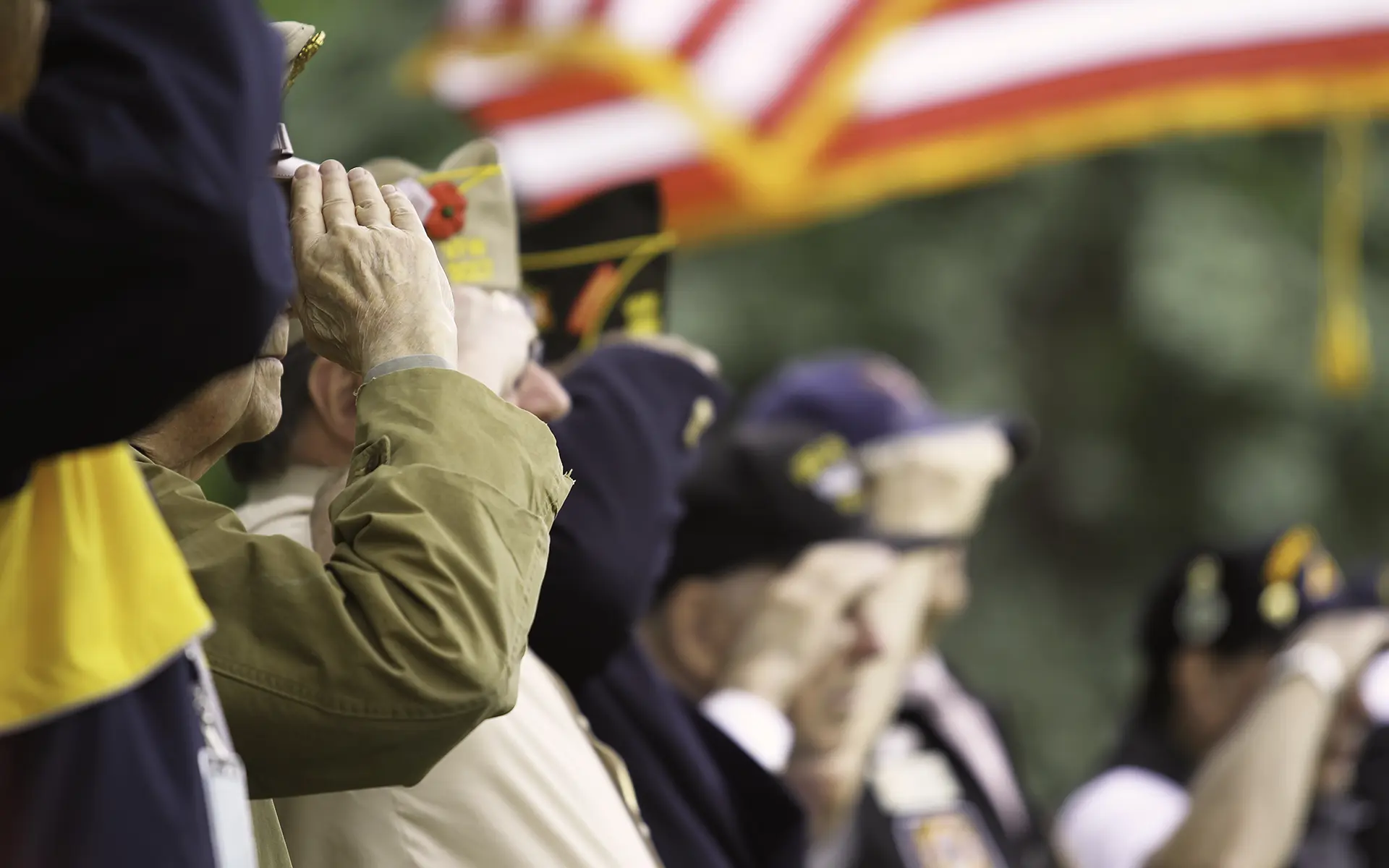Asbestos in the Military
After World War I, the need for asbestos grew and the mineral was incorporated into textiles, insulation, and building materials for the military. Today, the negative effects of asbestos are better known, and veterans are one of the groups most susceptible to developing mesothelioma.

History of Asbestos Use in the Military
Asbestos is a naturally occurring mineral that manufacturers have been using to reinforce materials since early as 2500 B.C.E. Other civilizations around the world also applied the mineral in several capacities. At the turn of the 19th century, however, modern industries began to incorporate the mineral. This led the U.S. military to do the same. Asbestos’s strength, flexibility, and heat resistance made it the answer to everything the military needed. People used it to reinforce textiles, insulation, concrete, and machines.
Leading up to World War II, the mineral became even more of a necessity. Demand grew, and by 1910, the U.S. had purchased 43 percent of the 109,000 metric tons of the world’s asbestos. This was due, in large part, to a development that made the mass production of asbestos cement easy and inexpensive.
The mineral seemed like the perfect solution to both keep up with wartime demand and post-war rebuilding. Even after WWII people still incorporated the mineral in the construction of most military bases and equipment. Demand peaked in the 1970s, despite a conclusive connection between prolonged exposure to the mineral’s harmful fibers and cancer in the 1960s, classifying it as a carcinogen.
Veterans who were diagnosed with mesothelioma may be eligible for VA compensation. To find out if you qualify, speak with a patient advocate today.

How Does the Military Use Asbestos?
Asbestos wasn’t just used in the concrete and steel used to construct military bases but in commercial and construction products that were supplied to the military. Companies reinforced products like boilers, parts for different vehicles, and sealants with the mineral. While manufacturers began phasing the material out of new products made in the 1980s and later, there were no requirements to remove the existing carcinogen. This means that soldiers today (especially those with certain occupations) are still at risk of exposure on older bases.
Every military branch used asbestos for decades. While certain branches were at greater risk for exposure, like the Navy, all veterans today are in danger of developing asbestos-related diseases. This is due to manufacturers using asbestos everywhere from paint to planes. Its fire retardant abilities meant that the military could create “safer” environments. Even today, despite the known risks, many hold asbestos in high regard and believe that the military and the rest of the country wouldn’t be where it is today if it weren’t for the carcinogen.
At one time, the mineral was used in over 3,000 products. Within any given base, the toxin could be found in:
- Paper products
- Cement panels and pipes
- Brake pads
- Insulation
- Corrugated sheeting
- Roofing materials and shingles
- Ceiling tiles
- Boilers
- Corrosive chemical containers
- Heat-protective pads
- Laboratory furniture
- Pipe coverings
- Sealants and caulking
- Textiles and heat-resistant fabrics
- Paint
- Patching compounds
Many of these contaminated items are still around today, making them an ever-present hazard for men and women serving in the military. Construction or plumbing roles have a higher risk for exposure since workers must maintain and repair buildings and equipment.
The Dangers of Prolonged Exposure to Veterans
The Environmental Protection Agency (EPA), the National Toxicology Program (NTP), and the International Agency for Research on Cancer (IARC) all recognize asbestos and similar minerals as carcinogens. Unfortunately, given the long latency period for related diseases, veterans who haven’t actively served in decades are still being diagnosed with diseases like mesothelioma today.
Veterans and Mesothelioma
Doctors diagnose approximately 3,300 cases of mesothelioma every year. One-third of these cases are veterans. This is due to the number of men and women who lived and worked in areas heavily polluted with asbestos. When circumstances disturb the toxic fibers, those nearby can easily inhale their microscopic barbs. They settle in the mesothelium, the protective layer around organs in the chest and abdomen, and create friction. These thorn-like fibers can then create scars that can grow and develop into cancerous cells.
Exposure to asbestos has been linked to three prominent forms of mesothelioma: pleural mesothelioma, peritoneal mesothelioma, and pericardial mesothelioma.
The most common form, pleural mesothelioma, affects the pleural lining of the lungs. This is the easiest area for the harmful fibers to reach. It’s rarer (but still possible) for the microscopic fibers to make their way to the abdomen (peritoneal mesothelioma), or the heart (pericardial mesothelioma).
Other Related Diseases Veterans May Suffer From
Despite how rare mesothelioma is, it’s the best-known disease that results from prolonged exposure to asbestos. However, it’s far from the only one. Researchers discovered the link between asbestos and several other cancers. Dangerous exposure happens from inhaling friable (i.e., easily crumbled) fibers. Today, medical professionals have drawn clear links to the following cancers:
- Lung cancer
- Larynx cancer
- Ovarian cancer
While there is less evidence, medical professionals also suspect a correlation to:
- Throat cancer
- Stomach cancer
- Colon cancer
- Rectal cancer
If a doctor diagnoses a veteran with one of the above diseases, it’s possible they encounter to hazardous toxins. While this is unfortunate, there are still a growing number of therapies to try and compensation to be had.
Veterans with mesothelioma can take action without affecting their benefits.

What to Do After Asbestos Exposure
Given the time between exposure and symptoms, it’s impossible to know how or if exposure to asbestos will affect someone immediately. It could be 10 to 60 years before cancer develops after initial exposure. It is also unlikely for mesothelioma to develop from a one-time contact. That is why veterans, many of which encounter asbestos multiple times through their service, make up one-third of mesothelioma diagnoses.
If you or a loved one served in the United States military and believe you have the symptoms of mesothelioma or some other asbestos-related disease, you may be entitled to benefits through the Department of Veterans Affairs (VA). In cases where you are not eligible for benefits (such as those who were dishonorably discharged), it is still possible to receive compensation through legal action. Receive a free case evaluation and discover your options.

